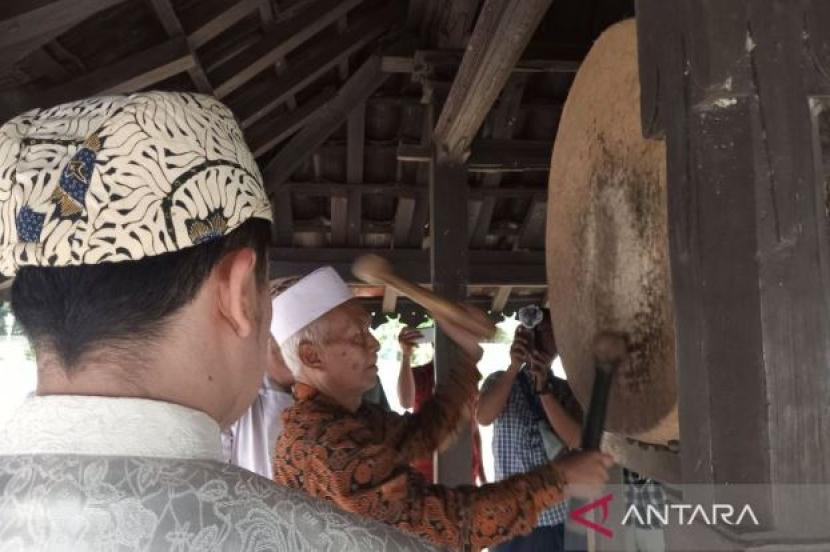REPUBLIKA.CO.ID, CIREBON -- Keraton Kasepuhan Cirebon, West Java, held a tabuh bedug or “Dlugdag” tradition to mark the beginning of Ramadan fast 1445 Hijri in the area.
“It is a tradition to welcome the holy month of Ramadan 2024, based on last night's results of the isbat session. The Ministry of Religious Affairs of Indonesia determined that tomorrow (12/3/2024) we have fasted,” said Patih Sepuh Keraton Kasepuhan Cirebon Prince Raja Goemelar Soeriadiningrat in Cirebon, Monday (11/3/2024).
He explained that in this tradition, the pagans gathered in the Langgar area of Kasepuhan Palace to sow the centuries-old bedug called Samogiri.
After that, he said, they alternately bedug the relics of Sunan Gunung Jati with various sounds. He described every sound as meaningful to the people waiting for the coming of the fasting month of Ramadan.
He said in principle this tradition serves as a sign of the time of prayer, a reminder of the coming of the holy month of Ramadan, as well as being a means of channeling joy in the practice of fasting worship.
“There are a few different definitions. But in that difference we still practice fasting worship together. That means we welcome the coming of Ramadan with joy,” he said.
Goemelar said the tradition of “Dlugdag” has been going on for hundreds of years and still exists today, as Keraton Kasepuhan continues to preserve the custom.
The tradition, he said, was carried out also by Sunan Gunung Jati in the past to spread Islam in Cirebon and its surroundings.
In the past, he said, Sunan Gunung Jati often practiced cultural acculturation by interspersing Islamic teachings on regional arts, one of which is the “Dlugdag” tradition.
“We hope that the people in Cirebon City can conduct fasting worship smoothly and can maintain tolerance with other religious adherents,” he said.
The head of the Department of Culture and Tourism (Disbudpar) of Cirebon City Agus Sukmanjaya pointed out the traditions preserved by the local palace, one of the attractions to attract tourists to visit the city.
He said the utilisation of this cultural wealth should be developed as tourism potential. It recorded 61 cultural reserves, 42 objects suspected to be cultural reserves, and 236 cultural works in Cirebon City.
“All this potential must be developed as a local culture for the tourist attraction of Cirebon City,” he said.


